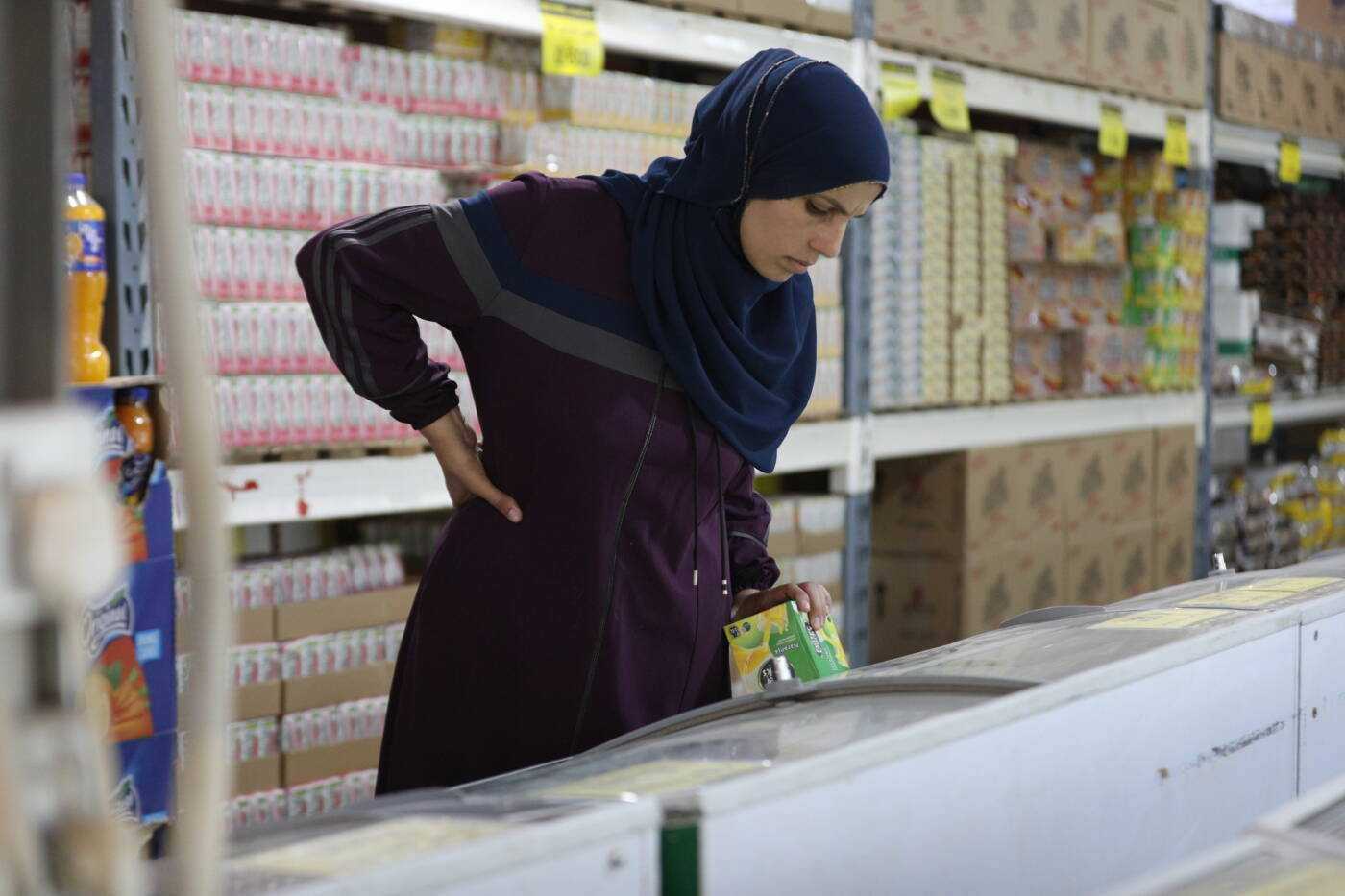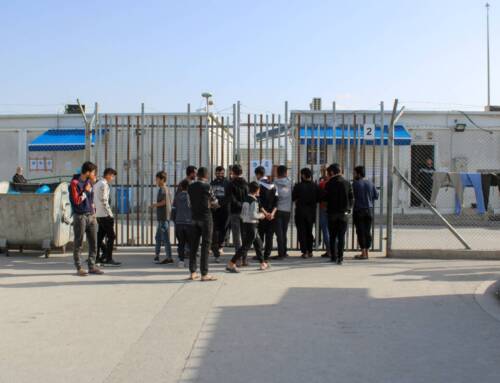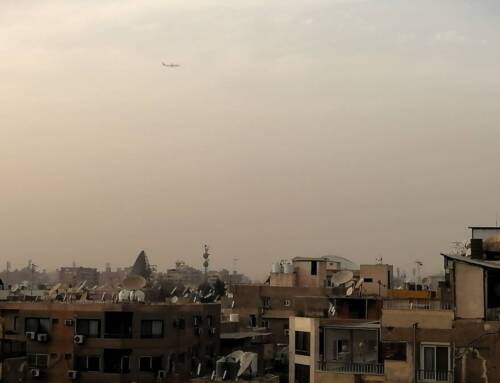Syrian refugees in Jordan fear aid cuts will push them further into poverty
Starting in August, 120,000 Syrians living in Jordan’s refugee camps will lose one third of their World Food Program assistance, the latest in a series of aid cuts amid an “unprecedented funding crisis.”
26 July 2023
AMMAN – Around 120,000 Syrians living in Jordan’s Azraq and Zaatari camps are set to lose a third of their food assistance starting in August. The World Food Program announced last week that it has been forced to cut its aid to refugees in the camps by almost 35 percent due to a major funding shortfall.
Residents in both camps told Syria Direct that they had already been struggling to meet their basic needs and are worried about how they will afford food when the cuts hit next month. Syrians in the camps were receiving 23 Jordanian dinars ($32) per person in monthly food assistance from the World Food Program (WFP), which will be reduced to 15 JOD ($21).
The news follows a series of reductions in international aid provided to refugees in Jordan and across the region. Syrians living outside camps in Jordan already faced reductions in WFP assistance in 2022. Support for Syrians has gradually been whittled away in recent years as fundraising efforts have fallen short of their goals.
The Jordan Response Plan, which provides aid to Syrian refugees in Jordan, was extended for 2023, but has a deficit of more than $1.5 billion, around 66 percent of the budget. Oxfam said last year that the funding shortfall is increasing refugees’ vulnerabilities.
The WFP Jordan office told Syria Direct that, according to data from the first quarter of 2023, 56 percent of families in Azraq and Zaatari camps are moderately or severely food insecure. Food price increases, amid a global cost of living crisis and increased inflation following Russia’s invasion of Ukraine last year, have further limited people’s purchasing power in the camps.
The aid cuts are a result of an “unprecedented funding crisis,”the WFP Jordan office said. “This highlights the urgent challenges faced by WFP in providing crucial support to vulnerable refugees in Jordan as funds run precariously low.”
A text message Syrians living in Jordanian refugee camps received from WFP in July informing them that food assistance would be cut from 23 Jordanian dinars ($32) to 15 dinars ($21) starting in August (Zahra Gharib al-Daher/Syria Direct)
Families fear the impact of cuts
Aisha, 40, whose name has been changed to protect her identity, has lived in Zaatari camp since fleeing Syria’s southern Daraa province with her daughter in 2013. When she and others in the camp received a message about the assistance reduction this month, there was “a lot of upset,” she told Syria Direct. “There are people who can’t live without this support,” she added.
As a single mother with a 14-year-old daughter, Aisha said she is already eating less so that her daughter can have enough food. “We’re going to be getting 30 dinars [a month],” she said. “It’s not enough for us, I’ll have to eat just one meal [a day]. She’s a child, I need to support her. I want to make sure I feed her so she can grow.”
Aisha works with a humanitarian organization in Zaatari, for which she receives a salary of 120 to 130 JOD a month ($170-$183). “My salary helps,” she said. “I can’t imagine how people manage without an income here.”
However, before starting her current job, she was out of work for a year and a half, leaving her in severe debt. With her contract due to end in two months’ time, Aisha worries about how she will afford food again. “Seriously, what should I do with my debt?” she asked.
Food assistance is the only income that many refugees in Azraq and Zaatari camps receive, with purchases verified via biometric iris scanners since 2016. With WFP assistance limited to supermarket purchases only, some people also sell a portion of the food bought with their credits to buy non-food items such as clothes or shoes. Many others rely on financial support from family members living abroad or on formal or informal work in order to meet their expenses.
Aisha believes the practice of selling food for non-food items is commonplace in Zaatari. “[Imagine someone who] walks with no shoes and cannot eat either. They have to reduce their food so they can buy the things they need,” she said.
Mohammad Nazal, 28, lived in Zaatari until two years ago when he got permission to leave. He now works as an interior designer in Amman. Five of his family members still live in the camp in northern Jordan, where his youngest sibling is just two years old. Nazal supports his family when he can, but is concerned about the reduction in WFP support. “Of course it will affect them,” he said. “They will have to reduce the types of food they buy.”
Zahra Gharib al-Daher, 36, has been living with her family in Azraq refugee camp since they fled fighting in Aleppo province in April 2016. She and her husband have eight children: her youngest is four months old, and the oldest is 15. News of the aid reduction has made her feel like there’s no hope. “The support already wasn’t enough for our monthly expenses,” she said. “Who is able to live on 15 dinars a month?”
“The things happening on the ground here really hurt one’s heart,” al-Daher said. “There is no support or anything other than for food, and people have to bear it. People are begging from their neighbors.”

A man gets onto a bicycle after purchasing bread at the World Food Program (WFP) bakery in Zaatari camp, 13/1/2023 (Younis al-Haraki/Syria Direct)
Cuts may increase risk of exploitation
The WFP Jordan office told Syria Direct the organization “is deeply concerned that scaling back assistance will impose considerable hardships on vulnerable refugee families.” They added that many families may resort to “negative coping strategies” such as child labor, child marriage, degrading work and begging as a result.
Al-Daher said she is aware of children living in Azraq who are already working in order to support their families—and that the need will likely be greater starting next month. “Some people go and work outside of the camp, and take their children to work too, especially in the summer,” she said. “They work on farms and take one dinar [$1.40] per hour for each person.”
Many families are reluctant to take this decision, but“people need to live,” she added.
According to Jordan’s National Child Labor Survey, which was most recently conducted in 2016, over two percent of children in Zaatari refugee camp were identified as working. No data was recorded for Azraq camp, which opened two years prior to the report.
Meshal El-Fayez, UNHCR Jordan’s spokesperson, told Syria Direct that the UN Refugee Agency is concerned about the increased protection risks faced by refugees due to the WFP aid cuts. “[Refugees may have to] resort to extreme measures, potentially such as child marriage or taking children out of school to work,” he said.
“This reduction of assistance compounds the cost-of-living crisis of the past year, which has been exacerbating refugees’ levels of vulnerability,” El-Fayez added. “Continued international support is vital to protect refugees from potential life-threatening risks.”
Calls for resettlement not returns
Aisha and al-Daher both said the only hope they have left is for resettlement to another country. Al-Daher fears what might happen if resettlement is not possible. “People here have really started to ask what they’re going to do with us in the future,” she said. “Everyone is afraid of being forced back to Syria.”
Aisha reiterated this fear. “The situation in Syria is really not safe,” she said. “I wish there could be more resettlement…I always say, please God, if I could just travel.”
The announcement of official political dialogue between Syria and Jordan earlier this year—as well as a wave of regional normalization efforts between Arab states and Assad—has increased fears among refugees that they may be forced to return. Among other risks, those who return to Syria may face persecution for perceived links to opposition groups. Syrian men between the ages of 18 and 42 are also subject to forced military conscription, which can last indefinitely and has been likened to forced labor by the United States’ State Department.
While the fear of forced returns lingers, Syrians in Azraq and Zaatari will have to deal with more immediate concerns starting next month. “I’m responsible for my five sons and three daughters,” al-Daher said. “I don’t want to see them oppressed. I can’t even give them half their rights because I’m not able to meet their needs.”








